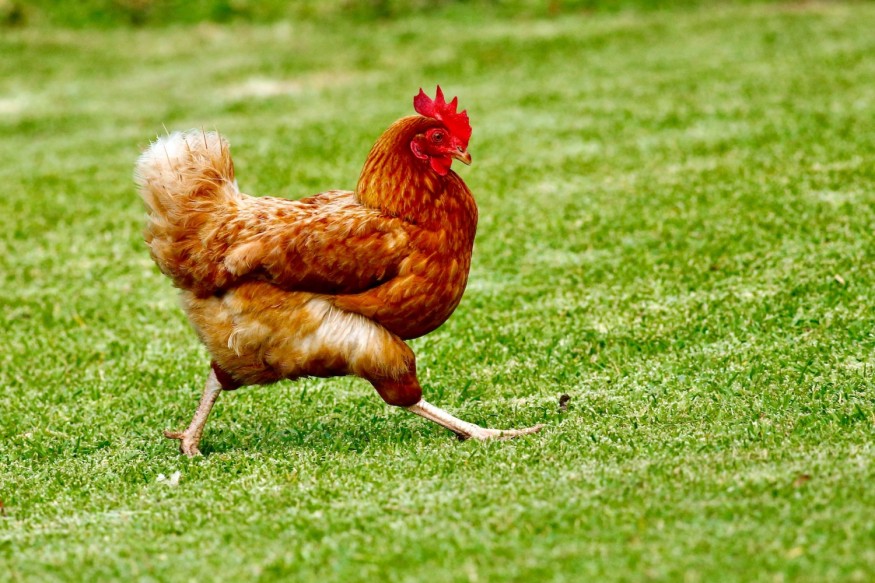Since ancient times, beheading has been used as a mode of capital punishment by mechanical means or by using tools. Decapitation is quickly fatal to humans as unconsciousness occurs within 10 seconds without blood circulation. Just like humans, it is also not possible for any animal to survive for an extended period after getting beheaded, but an ordinary rooster is famous for surviving a failed attempt at slaughter.

Mike, the Headless Chicken
On the evening of September 10, 1945, a rooster was pecking away at scattered food about a yard in Fruita, Colorado, without knowing the fate that would befall him. A farmer named Lloyd Olsen visited the yard to look for a suitable chicken for a meal his wife Clara planned on making for her mother.
Lloyd picked a five-and-a-half-month-old chicken as the unlucky fowl to be consigned to the cooking pot. Since his mother-in-law was partial to a bit of roast chicken neck, Lloyd brought his sharp axe near the chicken's head as he could to save this part of the body.
However, the seemingly fatal blow did not terminate the chicken's life. Instead, it attempted to preen, peck for food, and crow like the other barnyard chickens. The couple placed the animal in an old apple box on the farm's screened porch for the night. The following day, Lloyd and Clara found that the chicken was still alive and was sleeping with its 'head' tucked under its wing.
Lloyd decided that an animal of such willpower should be allowed to live. He would continue to care for the bird using an eyedropper filled with water and milk and the occasional small grains of corn deposited directly into its esophagus.
Words quickly spread around Fruita about the miraculous headless chicken. The local paper sent a reporter to interview Olsen, and two weeks later a sideshow promoter known as Hope Wade traveled almost 300 miles (483 kilometers) from Salt Lake City, Utah for a simple proposition. Wade wanted to take the chicken to the sideshow circuit to make money.
The Olsens first visited Salt Lake City and the University of Utah, where the animal was put to a series of tests. It was also believed that university scientists surgically removed the heads of many other chickens to see if any of them would live. Here, Wade also branded the animal as Miracle Mike, the Headless Chicken.
Mike became a national celebrity, with Lloyd charging 25 cents for everyone wanting to see it. At the height of his fame, Mike reportedly earned $4,500 monthly and was valued at $10,000. Two years after losing their head, Mike grew fat and gained six pounds (2.7 kilograms).
One night, while in Phoenix, Arizona, Mike began to choke. The Olsens had left their feeding and cleaning syringes at a sideshow the day before, so they could not save Mike. After their death, Mike was taken to the University of Utah in Salt Lake City. Although no one knows where Mike was buried, the people of Fruita, Colorado, celebrate the annual Mike the Headless Chicken Festival in honor of the famous fowl.
READ ALSO : What Happens After Decapitation? Experts Explain How Long Humans Can Live Without A Head
Surviving Decapitation
How is it possible for a chicken to survive without its head? According to poultry physiologist and neurobiologist Dr. Wayne J. Kuenzel from the University of Arkansas, part of the reason is the chicken's skeletal anatomy.
A chicken's skull contains two large openings for the eyes, allowing the brain to be pushed upwards into the skull at an angle of 45 degrees. This means that although some of the brain could be sliced away, the cerebellum and brain stem could remain intact so it can still perform basic motor functions and breathe. The analysis performed by scientists on Mike confirmed that Lloyd's axe had missed the jugular vein, and blood clots had prevented Mike from bleeding to death.
RELATED ARTICLE : Great White Shark Morbidly Decapitates Diver Gathering Shellfish; Two Fishermen Witness 2023's First Fatal Shark Attack
Check out more news and information on Decapitation in Science Times.
© 2025 ScienceTimes.com All rights reserved. Do not reproduce without permission. The window to the world of Science Times.











